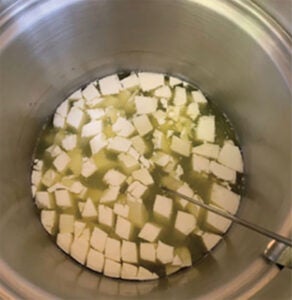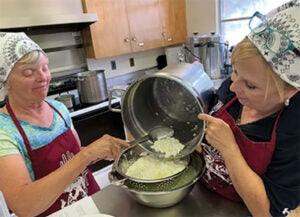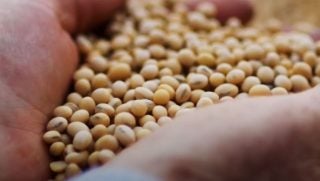Brie, cheddar, parmesan, gouda — all are types of cheeses you may enjoy. Do you know how your favorite creamy, delicate cheese is made? Relax. Just take it cheesy and keep reading!
Cheese is made from a yellow liquid, known as whey, from milk. Whey contains water, lactose, simple proteins, minerals, and vitamins. According to New Mexico State University, it takes about 10 pounds (1.25 G) of milk to make 1 pound of cheese. Making cheese is impacted by time, temperature, lactic acid bacteria, and coagulating enzymes (rennet).
Step 1:
First, you will add rennet to warm milk. The enzyme rennet interacts with casein to form chains, which will then trap water and fat, creating the curd.
Step 2:
Cut the curd into small squares, preparing for a separation of the curd from the whey.

Step 3:
Partially drain the whey from the curd and wash the curd with water to increase its moisture content. During this time is when you can determine what category of cheese is made by controlling the temperature and rewashing until it is at the desired moisture content and acidity.

Categories of cheese
There are five categories of cheese: fresh, soft-ripened, semi-soft, semi-firm, and hard. Cheese can play a key role in many dishes, making it important to understand the types of cheeses and how they should be used.
Fresh
These are the youngest type of cheese, hold the most moisture and are white on the outside as well as the inside. Fresh cheeses are unaged, unripened, and have no rind. The taste is mild, slightly acidic and with a slight hint of flavor. A few examples are ricotta, feta, mozzarella, and mascarpone.
Soft-ripened
This type of cheese is ripened for one to 30 days and has a high amount of moisture and fat content. They have a buttery, sweet taste and are served best at room temperature. A few examples are brie, camembert and chevre.
Semi-soft
These cheeses are lightly pressed into a mold, forming a rubbery layer on the outside with a soft center inside. Some of the popular semi-soft cheeses are havarti, muenster, provolone, and American.
Semi-firm
This type of cheese develops a wider range of flavors from floral to buttery to fruity. Semi-firm cheeses do not have the rubbery outside layer like semi-soft but is not a hard cheese either, making it perfect for slicing and shredding. A few of the most common cheeses are cheddar, gouda, edam and gruyere.
Hard
These cheeses (my favorites!) have been aged longer than the rest. They have a dry texture and are full of savory, potent flavors. With a low amount of moisture, these are the best to be grated and can sometimes be described as crunchy. A couple examples are parmesan, manchego, and asiago d’allevo.
Cheese is really “grate” and can be used in so many different recipes. It also adds $55.4 billion in direct economic impact and provides 57,700 industry jobs in the United States, according to the International Dairy Foods Association. Another wonderful thing about cheese is that you can buy it locally all year round, so do try to find a local farmer to support in your area!
Michelle Miller, the “Farm Babe,” is an internationally recognized keynote speaker, writer, and social media influencer and travels full time to advocate for agriculture. She comes from an Iowa-based row crop and livestock farming background and now resides on a timber farm in North Central Florida.


